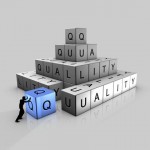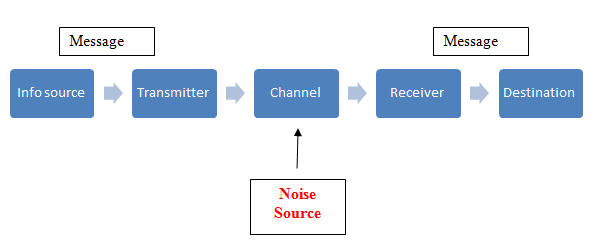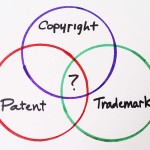Management

The impact of time management in individual and team performance is great. Time is one of the most valuable resources of individuals and organisations and this resource needs to be dealt with accordingly. Penalties for neglecting the importance of time management for organisations include higher costs of operations and missed opportunities. Effective time management strategies for individuals include scheduling meetings and tasks in an organiser, compiling to-do lists, dealing with interruptions, eliminating distractions and others (Mathews et al., 2011, online). Time management strategies in organisational level, on the other hand, include developing Gant-Charts for the completion of important projects, imposing deadlines for each tasks, and organising virtual conferences that do not require physical presence of employees whenever possible. Moreover, some businesses have adopted an unconventional approach towards employee time management with positive effects on the bottom line. For example, one of the most famous internet companies of the present day – Google allows its employees to spend one fifth of their paid time on side projects and this strategy is often credited for the development of a range of successful Google services such as GMail and AdSense (Tate, 2013, online). References Mathews, J., Debolt, D. & Percival, D. (2011) “10 Time Management Tips that Work” Enterpreneur, Available at: http://www.entrepreneur.com/article/219553 Tate, R. (2013) “Google Couldn’t Kill 20 Percent Time Even if It Wanted To” Wired, Available at: http://www.wired.com/business/2013/08/20-percent-time-will-never-die/

Dictionary defines quality as the standard of something as compared to other things of a similar nature (Oxford Dictionaries, 2014, online), but quality is a subjective term to be used in practical levels. Three major elements of quality can be specified as quality planning, quality assurance and quality control and it is important for the Company to deal with each of these elements appropriately. Quality planning relates to identification of quality standards that needs to be adhered. Quality planning is engaged in before the process of manufacturing. Quality assurance, on the other hand, is associated with the measures and procedures that ensure adherence to standard quality and these measures and procedures are applied during the process of operations. Quality control refers to initiatives to be used to improve the quality of products and services. Quality-related tools and methods can be divided into two broad categories: quality enabling tools and quality measurement tools. Elements of both categories can be integrated in specific approaches or philosophies towards quality management. Total Quality Management (TQM) and Six Sigma are the most popular approaches to quality management. TQM stresses the importance of total commitment to quality throughout the organisation and its main principles include customer-orientation, leadership, strategic planning, continuous improvement, application of statistical methods, training and development and co-operation. Six Sigma is an alternative quality-related philosophy and it adopts a data-based approach to eliminate defects. General Electric defines Six Sigma as a vision for quality that is equal to only 3.4 defects per one million opportunities. Adoption of Six Sigma approach can offer a set of significant advantages such as significant improvement of quality, cost savings through elimination of wastes and reduction in manufacturing process cycle time, as well as uniting all members of operations workforce around the idea of quality priority. It is crucially…

Importance of administration in managing operations, supply-chain management and quality is significant. Administration caters for information needs of organisations and also deals with developing and improving organisational processes, policies and systems. Operations management is associated with information needs at various levels i.e. information about the availability of stock, information about the quantity to be produced, information about the workforce availability etc. and lack or inaccuracies associated with any of this information may have negative effect on business performance, hence the importance of administration. Implementation of management initiative of producing upgraded product range for online sales in practice is going to further increase the importance of administration for Company’s operations management. For example, inventory management is going to be a major issue caused by the management plans of producing upgraded product range for online sales due to the lack of inventory space. This problem can be solved by applying Just-in-Time (JIT) principles. It has been noted that “the core philosophy of JIT is to provide an organisational framework to continuously reveal opportunities for elimination of non-value added activities” (Davis, 2009, p.43). High level of sophistication of information and communication technologies (ICT) offers attractive opportunities for administrative managers in terms of increasing the level of effectiveness of various administrative processes. For example, in case of JIT system in particular information about needed parts can be sent to relevant supplier automatically without human intervention whatsoever. References Davis, M. (2009) “The Fundamentals of Branding” AVA Publishing SA

Company operations have direct impact on business performance and internal measures of success can be applied in order to assess the nature of this impact. Great impact of operations on business performance can be explained by using the term of balanced scorecard, that consist of a set of measures used to assess four critical aspects of a business practice: financial performance, customer service, internal processes and innovation and learning. Most important operations-related internal measures of success within balanced scorecard include the amounts of waste and scrap, duration of time to produce a single unit, numbers of defected units, numbers of returned units, and the level of effectiveness of labour utilisation. Balanced scorecard has been widely praised by business scholars and practitioners for its advantages that include possibility to identify ‘best practices’ more effectively, opportunities to identify additional sources of competitive advantage, achieving alignment between key performance measures and organisational strategy, possibility view operations from holistic approach etc. Accordingly, acknowledgement of operations as one of the critical measures of success within the framework of balanced scorecard can be interpreted as indication of great impact of operations on business performance. Unless the quality aspect of operations is addressed in an effective manner, proposed management initiative of producing upgraded product range for online sales may have negative effects in internal measures of success at least in short-term perspective. In other words, on-site factory is already operating to near capacity with limited space for increasing inventory, and therefore attempts to increase the volume of output with disregard to quality, capacity and inventory is going to cause internal measures of success to decline which can lead to the overall decline of business performance.

Operations management can be defined as “a systematic approach to address all the issues pertaining to the transformation process that converts some inputs into output that are useful, and could fetch revenue to the organisation” (Davis, 2009, p.5). To put it simply, operations management for the Company comprises management of activities and processes that transforms raw materials into products. Operations management is inter-connected with many other business functions such as marketing, new product development, accounting and finance, human resources management (HRM), supply-chain management, as well as, technical functions of the business. For example, the quality of supply chain management for the Company directly effects operations management in a way that inbound logistics of raw materials of low quality is going to compromise the quality of the output. Similarly, operations management do have direct impacts of performance of marketing departments, because low quality of Company’s power garden tools is may contradict with marketing communication message of the marketing department with negative implications on Company’s brand image. Therefore, operations management needs to be viewed from a systematic approach as a part of overall organism known as the organisation. Activities involved in operations management for the Company include designing processes and products, controlling and purchasing the inventory, planning and control of operations and planning raw materials and production capacity. Implementation of the proposed management initiative of producing upgraded product range for online sales is going to have significant implications on all activities involved in operations management in strategic and tactical levels. In other words, the proposal is associated with significant increase in the volume of output despite the fact that the Company is operating to near capacity with limited space for increasing inventory. References Davis, M. (2009) “The Fundamentals of Branding” AVA Publishing SA

This article proposes a communication model for organisation in health industry. Communication is “a process of circular interaction involving a sender, receiver, and message” (Moran et al., 2007, p. 45) and the quality and level of communication plays an important role in running the operations by the health authority. Facilitation of communication in the health authority organisation in order to send messages to internal and external stakeholder can be explained by application of Shannon and Weaver’s (1949) model of communication which consist of five elements: information source, transmitter, channel, receiver and destination. Shannon and Weaver’s (1949) model of communication Adapted from Chandler (1994) Information source in case of the health authority relates to senior level management aiming to communicate information about changes in the organisation. Transmitter for the health authority relates to press office in case of communication with external stakeholders. In internal communication, on the other hand, line level managers and immediate supervisor may serve as transmitters of messages sent by stop management. Channels available for the health authority to transmit its messages include but not limited to the official website of the organisation, press releases in local and national media, newsletters etc. Receiver can be represented by media for external communications as a wide range of media platforms can discuss official press releases of the health authority organisation thus, causing the message to reach its destination. Destination for communication message represents individuals and parties for whom the message is intended. Noise is an important factor in this model of communication as it can interfere in communication process potentially causing messages to be misunderstood. Therefore, it is important for the health authority management to be proactive in terms of eliminating or at least minimising the noise. References Chandler, D. (1994) “The Transmission Model of Communication” Available at: http://www.aber.ac.uk/media/Documents/short/trans.html…

This brief article discusses information management processes for health authority focusing on information communication technologies. Information is a vital tool for the health authority and its effective management is the most basic responsibility of administrative management. Information management process for the health authority may include the following stages as proposed by Akwetey (2011): 1. Collecting information. In health authority organisation information can be collected from application forms and other internal and external sources. Moreover, primary data collection can be initiated with the use of surveys, focus groups, experiments etc. 2. Processing information. This stage can be greatly assisted by the application of relevant analytical software and the level of sophistication of such software is rapidly increasing. 3. Analysing the information. Information on its own does not represent value in practical levels; therefore information needs to be transformed into knowledge through critical analysis. 4. Acting upon the information. This last stage in information management process is associated with developing recommendations according to analyses of information and application of recommendation in practice. Dramatic development of information technology and intensive integration of internet in increasing range of organisational processes has increased the level of convenience and effectiveness of each stage in information management process. Specifically, information and communication technologies (ICT) represent an effective platform to be used in data collection, processing of information, and data analysis. ICT applications can be divided into two categories: standard and specialised (Shane, 2008). Standard applications can be used in a wide range of industries and purposes and they include word pressing applications such as Microsoft Word and Text Document, database software such as Access, Oracle etc. Specialist ICT applications, on the other hand, are applications that are industry-specific. Specialist applications available for the health authority include Electronic Patient Record Keeping (EPR), Medical Use Expert System (MYCIN) and others. References Akwetey,…

Administration can be defined as “activities involved in managing a business, organisation, or institution” (Macmillan Dictionary, 2014, online). Main differences between administration and management relate to objectives, skills and competencies and the level of involvement in producing products and providing services. Specifically, managers are involved in producing products and providing services in a direct manner, whereas administrators are involved indirectly through developing relevant policies, aims and objectives. Administrative management primarily deals with information needs of managing organisations. Due to the recent restructuring of the health authority and resulting increase of geographical scope of operations encompassing four towns the need for timely and accurate information has increased for senior management. Accordingly, this change has further increased the importance of administrative management for the health authority. Core management functions include planning, organising, staffing, leading and controlling and administration plays an important role in facilitation of these functions in an effective manner. For example, as part of staffing management function health authority senior management need to ensure that employees in new sub-offices in four towns have common set of skills and capabilities for similar positions. This objective can be achieved by application of administrative measures that include formulation of relevant policies and devising effective procedures. Generally, effective administration can benefit the health authority in achieving its organisational objectives in three ways: data processing, office services and systems analysis and design. Data processing can be specified as an important aspect of health authority operations due to increasing relevance and range of data such as patient information, information about suppliers and employees, relative performance of sub-offices etc. Effective administration can assist in data processing practices of the health authority in a range of ways discussed further below in greater details. Office services represent another critical area for the health authority since the organisation has expanded…

Resource based framework is different from alternative business strategy frameworks discussed above in a way that it analyses internal and external factors impacting strategy in an integrated manner. Resource based framework associates company’s competitive advantage with its access to valuable resource(s). While discussing this framework, Boone and Kurtz (2013) divide resources into three different categories: tangible, intangible and organisational. Tangible resources include physical items such as money, facilities, plants etc. All types of tangible resources can be acquired for money, however, the level of their utilisation and achieving their contribution to the bottom line depends on other types of resources discussed below. Intangible resources, on the other hand, include brand name, organisational knowledge and other similar intangible elements. Organisation-specific processes such as Total Quality Management (TQM), Just-in-Time (JIT) inventory can be mentioned as examples of organisational resources. Ginter (2013) explains that no two businesses possess exactly the same quality and amount of resources, and therefore the level of competitiveness amongst businesses will always vary. References Ginter, P.M. (2013) “The Strategic Management of Health Care Organisations” John Wiley & Sons

Main forms of intellectual property protection available to companies include patents, trademarks, design copyright and trade secrets and important aspects of using these intellectual property protection techniques are discussed further below: Patenting is one of the most popular forms of intellectual property protection. Types of intellectual properties to be protected by patents relate to methods and processes that facilitate working of things (Davies and Cheng, 2011). Patents can be divided into two categories: utility patents and design patents and patents have been initially developed in order to assist inventors to recoup research and development expenses before competitors with the same products enter the market. Patent litigation issues are commonplace between multinational companies in general, and businesses in computing, consumer electronics and software industries in particular. For example, during the year of 2012 alone HTC, Taiwan-based global smartphone designer and manufacturer have been involved in ten patent litigation lawsuits (Annual Report, 2012). The importance of protection of intellectual property is duly understood by many multinational companies. For example, Pepsico publicly announces that “we protect our intellectual property rights globally through a combination of trademark, copyright, patent and trade secret laws, third-party assignment and non-disclosure agreements” (Annual Report, 2012, p.47). Moreover, one of the most recent cases of patent infringement lawsuit involve long-standing dispute between two global computer and consumer electronics manufacturing companies – Apple and Samsung. The dispute relates to Samsung’s use of technology that has been previously used by Apple for its IPhone and IPad products and patented. According to the verdict issued by a US Federal jury, Samsung Electronics has been ordered to pay Apple USD 290 million compensation (Martin, 2013). Implications of this particular lawsuit are significant at the global scale, because it illustrates severe negative financial and brand image damage implications of patent violation practices. Trademarks represent…
